| The Western Québec School Board acknowledges that the lands upon which we live, learn and work are the traditional unceded territory of the Algonquin Anishinaabe peoples. We thank the Algonquin people for sharing these lands and commit, as an organization, as educators and as individuals, to an ongoing relationship that recognizes and respects the lands, traditions, and culture of the Algonquin Anishinaabe people. |
Saturday, September 30, marked the third National Day for Truth and Reconciliation. The day honours the lost children and the Survivors of residential schools, their families and communities. Commemorating the tragic history of the residential school system and its ongoing impact is a necessary step in the process of reconciliation.
The National Day for Truth and Reconciliation was marked by our schools and centres in different ways. Below are just a few examples of some of the initiatives taken.
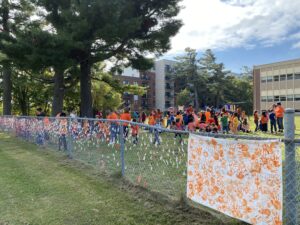
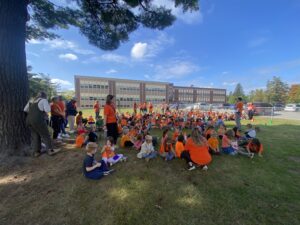
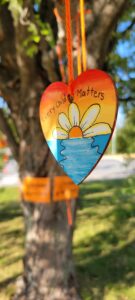
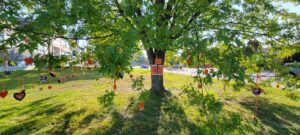
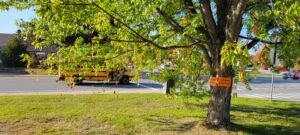

At Buckingham Elementary, for example, students gathered outside to decorate a fence with ribbons and banners.
At the Pontiac Continuing Education Centre, students and staff collaborated on creating a touching mural, and learned from numerous educational materials on the history and impacts of the residential school system dispersed throughout the centre.
Up North at Golden Valley School, students painted wooden hearts, and placed them on the Tree of Hearts in front of the school.
Orange Shirt Day
Many of us wear orange shirts on September 30 to recognize and remember the history of residential schools and the impact on indigenous people. The day relates to the experiences of Phyllis Websad from the Stswecem’c Xgat’tem First Nation whose orange shirt was taken from her on her arrival in a residential school. The Orange Shirt now symbolizes the stripping away of culture and identity of Indigenous children.
Residential Schools in Canada
Residential schools were government-sponsored religious schools that were established to assimilate Indigenous children into Euro-Canadian culture. Although the first residential facilities were established in New France, the term usually refers to schools established after 1880. Residential schools were created by Christian churches and the Canadian government as an attempt to both educate and convert Indigenous youth and to assimilate them into Canadian society. However, the schools disrupted lives and communities, causing long-term problems among Indigenous peoples.
- Residential schools in Canada, The Canadian Encyclopedia
- Timeline of residential schools, The Canadian Encyclopedia
Educational resources for the National Day for Truth and Recognition: